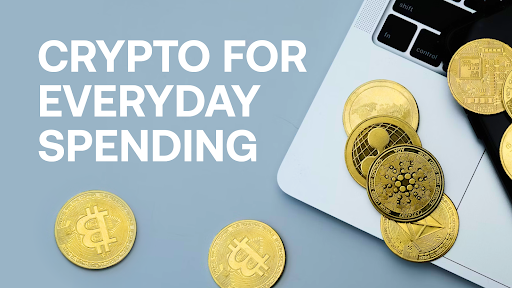
Money only matters when you can use it. That has always been the test. From the first coins in markets, to paper notes carried across continents, to cards and tap-to-pay apps, the measure of money has been simple: does it work when people reach for it?
Crypto is the newest chapter in that story. Adoption is rising fast, with millions in India, the United States, and beyond turning to digital assets. Stablecoins, especially, now move trillions every year, with Tether alone clearing more than a trillion dollars each month.
But here is the catch. For most people, that new system remains out of reach. You can save in crypto. You can trade it. You can even watch it grow. But when it comes time to buy groceries, pay rent, or book a ticket, the system breaks down.
The Friction People Feel
Getting into crypto is no longer the challenge. Living on it still is.
Freelancers who earn in stablecoins often face a maze of steps before their money is usable. They must push it through exchanges, accept fees on every transfer, and wait for settlement into their bank accounts. When funds arrive, the advantage of fast digital payment is gone.
Families in countries like Argentina, Turkey, and Brazil turn to USDT as protection against inflation. Their savings may hold value, but when they try to use it for food, rent, or medicine, they are blocked. What worked as a store of value collapses as a medium of exchange.
Travelers and digital nomads encounter their own barriers. Accounts are frozen, transactions flagged, and payments rejected — not because of fraud, but because their income does not fit the assumptions of traditional banking. Instead of enabling borderless living, the system cuts them out.
Crypto may promise global access, but today it too often stops at the moment of purchase.
The Big Players Already See It
The irony is that the companies running the world’s payment systems are already preparing for this shift. Visa tested stablecoin settlement in 2023 and has since expanded support to new tokens and networks. Mastercard is building cross-border corridors through Paxos’ Global Dollar Network. Stripe has reintroduced crypto payments and now lets millions of merchants accept USDC through Shopify.
These are not tech pilots or publicity stunts. They are bets on the future. The processors that already move trillions each year are building for a world where digital assets have to function like money, not just investment.
Fintech apps like Revolut show the same pattern. They grew by making access effortless, but they remain bank-linked and fiat first. For people who want true control of their money, that is not enough.
Custodial crypto cards, like those offered by Redotpay, highlight both demand and limitation. They show that people want to spend their assets. But if balances can be frozen or limits imposed, the independence crypto promised evaporates.
What People Expect From Money
At the end of the day, consumers are not chasing theory. They care what money does for them. Expectations are clear:
It must be safe to hold.
It must be usable everywhere with minimal friction.
It must provide benefits that justify its use.
Traditional finance built loyalty with cashback, travel perks, and reliability. Digital wallets built habits with speed and convenience. Most crypto products do not yet meet that standard, and until they do, people will default back to fiat.
Meanwhile, wallets are becoming easier to use and tokenization is spreading. But these advances only make the missing link of everyday spending more apparent.
Trust Depends on Access
In my years working in finance after the 2008 crisis, one lesson was clear. Trust is not built on speculation. It is built on access. If people cannot use their money when they need it, the system fails them.
Crypto is no different. To become part of daily life, it must give people direct control of their assets, seamless usability across borders, and benefits on par with traditional options. Without those standards, adoption will stall.
The Test That Matters
Regulators in Europe and the United States are both moving, albeit in different ways, toward recognizing stablecoins as legitimate money.
But recognition is not enough. The real measure of progress will be whether people can rely on crypto to do what money has always done, which is work in the moment it is needed. Until that happens, digital assets will remain more promising than practical.
I have watched cycles in banking, fintech, and now Web3. The products that last are not the flashiest or the most hyped. They are the ones people can count on every day.
That is the test ahead. And it will not be decided in dashboards or exchanges. It will be decided in the simple act of paying for life’s essentials.
(Patrick Carey has been a chief architect and solutions designer with HSBC, Deutsche Bank, UMB, Hayfin Capital, Thomson Reuters, ABN AMRO before switching to a career in web3. Currently, he is the CTO of CoinTerminal, the leading on-chain fundraising platform with more than 620,000 users and is launching a new financial instrument in early 2026.)



